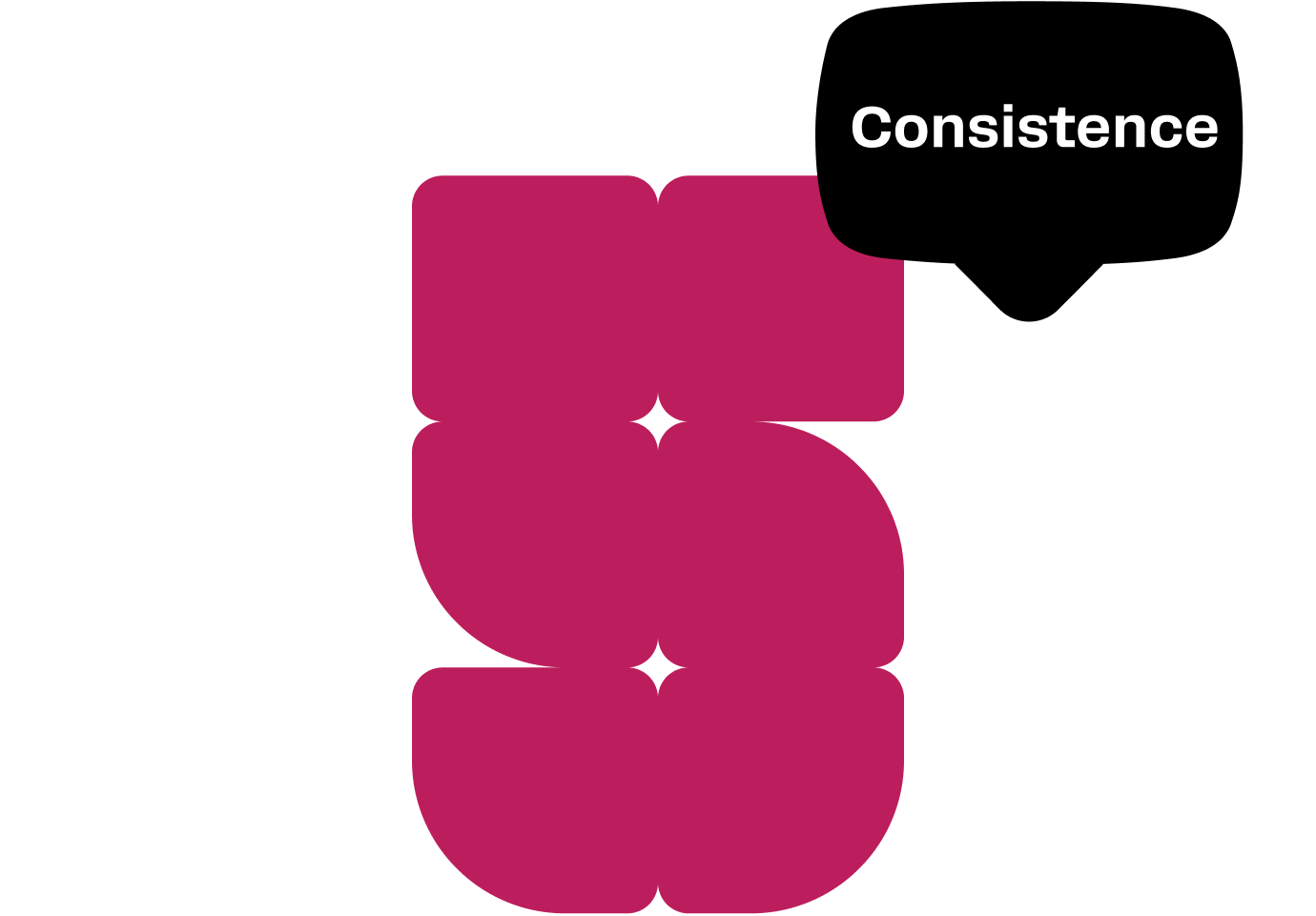How to Build a Brand in 10 Steps

All too often we think of our business as an entity rather than having an identity, which suggests that there may be a really important aspect of your business that you’ve overlooked: building a brand.
It’s just not enough to have an amazing product or service. Customers will want to know what your business has to offer them and if it’s trustworthy, and you can make this happen by creating a business identity that appeals to human emotions more than a functioning business would. Whether you’re starting a new brand, or rebranding your company, you will want to start from ground zero.
Here’s how to build a brand and establish strong brand equity from the start:
First: What is a Brand?
Simply put, a brand is how a company is perceived by anyone that comes into contact with it. This includes customers, potential clients, investors, and the general public. It’s the umbrella identity of a business as a whole, rather than as a sum of its parts.
The general population may come into contact with a brand through various touchpoints such as printed ads, social media, radio advertisements, podcasts, and other types of content. Your brand identity, simply put, is the first impression your company makes to the world via an identifiable personality.
The Difference Between a Business and a Brand
The simple difference between a business and a brand is this: reputation.
A business is an operational entity participating in regular commerce, whereas a brand is that same business but with an identity that has been formed by consumer perception.
So while, yes, a brand certainly incorporates a visual identity, the simple fact is that a brand is a business, but with a reputation.
Brand architect and CEO of Gallant, Chris Kocek, put it best in his article for Entrepreneur. He states that the difference between a business and a brand is:
“A business becomes a brand when it transcends its category of origin. It takes existing core equity or a particular philosophy, and it infuses that idea into everything it does, furthering its reputation or world view one product, service or line extension at a time.”
— CHRIS KOCEK, Brand architect and CEO of Gallant
Why is it Important to Build a Successful Brand?
Building a successful brand is extremely important to the life and longevity of your business.
Social media and other advancements in technology that have connected us all more tightly have contributed to a higher degree of market competition. Maintaining an edge means setting your business apart from others like it, which is achievable by creating a brand identity. By using social media platforms as a strategy to reach potential customers, you’re positioning yourself as a brand that can connect with them across platforms.
Not only will building a brand help you to stand out in your niche, but it also allows you to gain and maintain a strong client base, solidifying customer loyalty and encouraging business growth. It shouldn’t surprise us that brands are highly effective when they’re built right — realistically, because you’ve built this brand using extensive research about your target audience or the niche your business serves. You’ve been able to establish trust with your customers, creating long-term relationships that will continue to expand your brand message.
Let’s take a look at an example.
Apple has built a strong reputation as a leader in tech by creating an identifiable personality that’s clear, concise, and minimalist. This identity brand image is reflected in their products and support, and even in their minimalist logo, advertising, and packaging. Their successful branding has positioned them at the forefront of the consumer market in electronics.
5 Steps to Follow When Building Your Brand
Now that you know the difference between a business and a brand and why it matters, you can begin to take steps toward elevating your business to a great brand that appeals to your target audience.
1. Know your audience

Establishing who your product or service best serves allows you to keep your focus. Your brand is meant to elicit trust and approachability. If you’re able to narrow down your target audience, then the hardest part is done, as details about your audience will act as your focal point moving forward. It’s important to check back to this when your business has matured to see if your audience has changed. Then, you’ll be able to make changes if and when needed.
One of the best ways to define your target audience is by creating 3-4 customer personas. These are fictional bios that paint a realistic picture of who your customers are.
2. Set the tone

You’ll notice that candy brands such as Reese’s or Skittles have a very fun, casual, and confident voice and tone that it uses in its marketing and advertising. This effective use of brand voice intentionally speaks to a younger audience.
What are some of the words or phrases that come to mind when you’re trying to build rapport with your clients? Think of deeper descriptors than good, dependable, or competent. Those are all wonderful attributes for a company to strive for, but being more specific will help your team to stay focused on your brand’s intention. You can then use this voice across all the messaging and communication with customers, such as within your chat marketing, SMS marketing, or emails.

3. Know your worth

One of the best assets any company can have is the ability to know its worth and mission. What sets your company apart from the competition? How are your products better and how can people grow to trust your judgment? These questions will help you to build trust with your target audience by incorporating them into your brand. Knowing what sets your business apart from the rest will allow you to capitalize on within your brand strategy.
Thinking back to the Apple example, they’re able to charge a higher price point because they’re branded themselves as a high-quality communication technology provider.
4. Get Creative

If you want to learn how to increase brand awareness, you’ll need to be creative. Creating a logo that will stand out for your business is only a small step in building your brand. Just remind yourself that the brand goes beyond the logo. You will want to create a color scheme that best represents your brand and use that pallet in all that you do. Think of how to implement your logo and colors best on social, email sequences, flyers, signs, and blog posts. Your business should be recognizable regardless of where people come across your marketing material. Your brand is a quick glance at your company and an invitation to dig deeper.
5. Be consistent

Now that you know your target audience and are building your brand around your business’s core values, it’s time to reiterate that consistency is key. Your business will only be as strong as the consistent qualities that it keeps.
For example, along with building a logo, you will want to establish exactly where and how it appears. Publish a short best practices file that will be given to anyone on your design and sales teams.
Key Takeaways
Building a brand is the most important thing that you can do as a business. It will be responsible for your recruitment of staff and the satisfaction of your clients. Here are some important things to know about building a brand:
A brand is how a company is perceived by anyone that comes into contact with it. This includes customers, potential clients, investors, and the general public. It’s the umbrella identity of a business as a whole, rather than as a sum of its parts.
A business is an operational entity participating in regular commerce, whereas a brand is that same business but with an identity that has been formed by consumer perception — they’ve built a reputation. It’s best put this way: “A business becomes a brand when it transcends its category of origin. It takes existing core equity or a particular philosophy, and it infuses that idea into everything it does, furthering its reputation or world view one product, service or line extension at a time.”
Building a brand identity will help you to stand out in your niche while also allowing you to gain and maintain a strong client base, solidifying customer loyalty and encouraging business growth. A brand is highly effective when it’s around the target audience or the niche your business serves.
Here are 5 steps to help you build a great brand:
Define your audience using target personas
Create a strong tone and aesthetic that empowers and engages your target audience
Use your brand to position yourself at a price point that makes sense
Use a variety of creative means to create a strong and recognizable brand image
Stay consistent by using a central guide when using multi-channel marketing.
The bottom line is that if you ask a handful of people what a brand is, you might get a few different options. One common theme that most marketers would allude to, is that it all boils down to creating a perception of your brand and using it as a tool to remain competitive and drive your business objectives. Positioning yourself as a company that receives positive brand recognition may take time, but if you establish a strategy and solidify your brand message from the start, you have the potential to thrive.
Related Articles
Try Manychat for free
Transform more conversations into sales, leads, and conversions today














